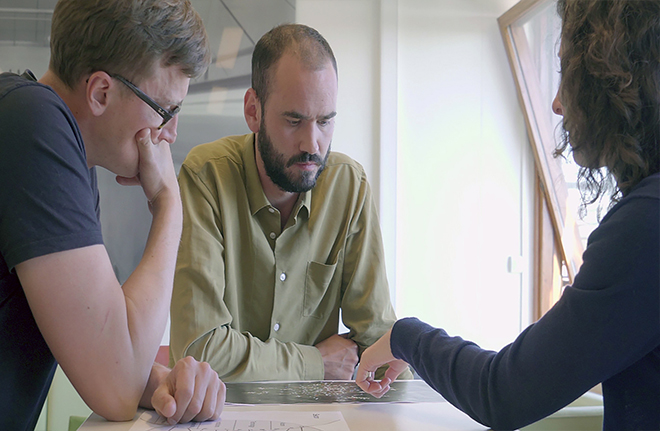Supplier Industry and Value Creation (SIVAC) is a research project carried out at the Centre for technology, innovation and culture (TIK) at the University of Oslo. It focuses on innovation and industrial change in the oil and gas industry. The ambition has been to understand how the oil and gas industry, as an example of a natural resource sector, has developed and the role innovation plays in industrial transformation of this scale.
In particular, we have been interested in understanding the role that the petroleum supply industry has played in transforming the Norwegian oil and gas industry, and the potential for industrial diversification of petroleum supply firms.
Essentially, we have been trying to understand how the Norwegian petroleum industry developed into a high tech industry over the last three decades, and whether the significant build-up of advanced technological capabilities connected to offshore operations can offer the industry a platform to move beyond oil in an industrial sense when the time is right.
Hurdles to transformation of the Norwegian economy
Our results indicate that the petroleum industry and its suppliers represent a significant part of the innovation capability in Norwegian industry overall. This is good news for the petroleum industry off course, but it raises the question of whether we can draw upon the significant resources in the oil sector for future applications outside oil in the future.
What does it take to transform petroleum technology and companies to other areas of industrial applications, for instance in offshore wind, marine industries, geothermal energy production or industries we are yet to think of? These are pertinent questions for Norway, but also other petroleum economies or other economies dependent on natural resources.

In terms of challenges for industrial transformations in Norway, we have found that neither people nor technology are going to be the major hurdles in transforming the Norwegian economy in the future. However, social and political factors, including business models, support schemes for industry, industrial policy etc., are more difficult to change and represent major challenges for industrial transformation in Norway.
Three transformations in petroleum
Through the Supplier Industry and Value Creation project we have studied the development of the Norwegian oil and gas sector from the late 1990s and until today. Specifically we have looked at three broad transformations that also mirror development trends in the global oil and gas industry.
The trends can be described as increasingly innovative and technology intensive, increasingly global, and increasingly diverse in competencies and technological applications. The latter is very important to understand the potential for economic diversification of the Norwegian economy in the long run.
A highly innovative sector
In terms of the first trend, we assume that the oil and gas sector constitutes a highly innovative resource-based industry where innovation activities are distributed across multiple players. Our job has been to empirically measure the mode of innovation in oil and gas and its influence on firms’ value creation.
The result indicates that petroleum firms and petroleum supply firms constitute the core of the innovative capability in the Norwegian economy. The petroleum sector scores highly on every single indicator of innovation performance. This means that the sector both invests significantly in research and development, it employs staff with advanced skills, and it develops and implements a wide range innovative solutions every year.
The sector is also highly collaborative, with dense ties between petroleum companies, suppliers and research communities. This model has clearly been a strength of the innovation system and it has enabled the development and deployment of path-breaking technologies both in Norway and abroad.
Globalization of Norwegian petroleum suppliers
In SIVAC, we have also looked at the relationship between development of technological capacity in Norway and the extent to which these experiences have offered supply companies a platform to reach international markets, particularly in South- and North America.
The findings show that Norwegian petroleum firms, and particularly suppliers, are now part of a global value chain. Some firms have been able to exploit the unique technological capabilities developed in the North Sea, with its strong focus on safety regulations and difficult natural conditions, to reach international markets.
However, successful internationalization is dependent on more than advanced technological capabilities. The market opportunities available in different international markets are dependent on the technological standards chosen in different petroleum regions. For instance, the exploration concepts and technologies developed are specific to different petroleum markets. This partly explains why Norwegian firms have been more successful in Brazil than in the US markets for instance.
Diversification and the future of the Norwegian oil industry
The SIVAC project has also looked at diversification of the supply industry in terms of the different markets that oil and gas suppliers are present in, and the experiences suppliers encounter in other markets than oil-related ones. Our analysis indicates that the majority of petroleum supply firms have activities in multiple markets, predominantly marine operations and land based industries. The supply industry have a broad range of capabilities which would offer them a good basis for diversification. However, smaller supply companies with generic skills are more likely to be diversified than larger companies.

Our results indicate that technologies, people and companies in the supply industry are light on the feet and can be redeployed in new markets. However they are also quick to return to oil, and this intermittent diversification behavior is potentially harmful for growth of new industries. One reason for this behavior is that market conditions and the innovation model in the oil sector are unique.
One important hindrance is that supply companies are used to working with dominant users that fund the development phase, and that customers are willing and able to pay for custom-made solutions. This means that suppliers take limited risks when developing new technologies. In other markets, producers of technology need to take larger risk themselves and they have to sell their products in larger batches to cover their costs.
More information
The project: Supplier Industry and Value Creation (SIVAC)
Contact: Taran Mari Thune